The Ariel Nomad 2 is a high-tech beach buggy designed for all-terrain entertainment
British bespoke car maker Ariel updates its ultra-functional Nomad all-road sports car for a new generation of enthusiasts

For some people, the journey is way more important than the destination. We’re guessing that’s the ethos of anyone who invests in the new Ariel Nomad 2, an ultra-light ‘go-anywhere sports car’ that’s road legal yet prefers to eschew the tarmac altogether.
Ariel launched the first Nomad in 2015 as a companion to the track-focused Ariel Atom, a cultish two-seater that was all about the purity of the (on-road) driving experience. The Nomad took the Atom’s stripped-back aesthetic and beefed it up for use in practically any kind of terrain. This cultish contemporary beach buggy is now revealed in its second generation.

Ariel Nomad 2
Ariel points out that the new car only shares three parts with its forebear, but the space frame aesthetic is still very much alive and well. Creature comforts be damned, this vehicle is all about experience, whether that’s the sound of the 2.3-litre turbo-charged Ford engine, mounted just inches behind your head, or the high-speed ingress of dust, gravel and insects as you scythe along paths impassable to any other sports car.
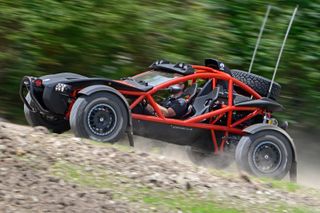
Ariel Nomad 2
The trademark tube chassis is beefier, bringing with it more stiffness and the very visible outboard suspension has also been redesigned to give the car a firmer ride and more traction. Enthusiastic drivers – and only enthusiasts will buy this – can dial in their preferred engine mapping, and there’s traction control and launch control to aid a 0-60mph sprint in 3.4 seconds.
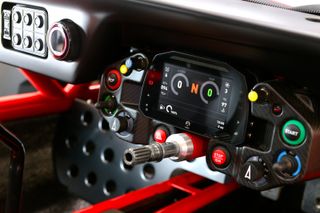
The Ariel Nomad 2's instrumentation and switchgear - with steering wheel detached
Nomad 2 also gets a full digital dashboard, as well as more space in the airy but tight-fitting cockpit, with updated seats that should bring a greater measure of comfort. No one is pretending that this is anything other than a fun toy, however – long journeys don’t offer up the prospect of all that much joy.
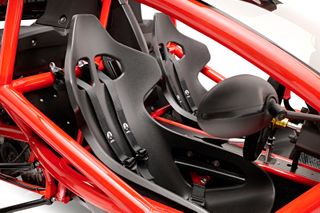
The Ariel Nomad 2 interior can be hosed down for cleaning
Simon Saunders, Ariel’s director and the creator of the original Atom, describes the Nomad 2 as a ‘truly remarkable car’.
‘Making the same car capable of reliably and repeatedly jumping the crest of an off-road hill at more than 100mph takes this to another level,’ he explains. ‘If you then add in loose surfaces, mud, water, and perhaps some ice, you’ll appreciate the extremes that we have dealt with. It’s a car that can be driven to the shops, and then around a WRC rally stage.’
Wallpaper* Newsletter
Receive our daily digest of inspiration, escapism and design stories from around the world direct to your inbox.
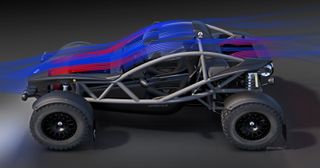
A diagram of the airflow over the Ariel Nomad 2
Every facet of the car is strictly functional, right down to the aerodynamic header rail that helps feed air into the raised air intake, but also doubles up as a sun visor and a place for additional LED driving lights. A spare tyre, or luggage and even bicycles, can be mounted on the rear rack, and Ariel offers a winch option for the front bumper.
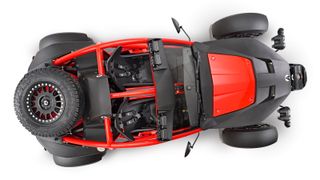
Ariel Nomad 2
Customers can expect a huge options list to ensure their Nomad 2 drives to their precise specifications (and potential driving environment). All will have plenty of suspension travel for the roughest of roads and tracks, as well as thorough weatherproofing to keep the countryside out of the important oily bits. To clean it, you simply hose it down, inside and out. To experience all of this, you'll have to join a long waiting list.
Ariel Nomad 2, from £67,992, ArielMotor.co.uk

Jonathan Bell has written for Wallpaper* magazine since 1999, covering everything from architecture and transport design to books, tech and graphic design. He is now the magazine’s Transport and Technology Editor. Jonathan has written and edited 15 books, including Concept Car Design, 21st Century House, and The New Modern House. He is also the host of Wallpaper’s first podcast.
-
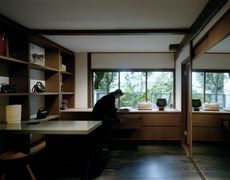 Tranquil and secluded, Lemaire’s new Tokyo flagship exudes a sense of home
Tranquil and secluded, Lemaire’s new Tokyo flagship exudes a sense of homeIn Tokyo’s Ebisu neighbourhood, Lemaire’s tranquil new store sees the French brand take over a former 1960s home. Co-artistic directors Christophe Lemaire and Sarah-Linh Tran tell Wallpaper* more
By Joanna Kawecki Published
-
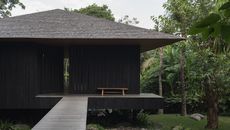 ‘I wanted to create a sanctuary’ – discover a nature-conscious take on Balinese architecture
‘I wanted to create a sanctuary’ – discover a nature-conscious take on Balinese architectureUmah Tsuki by Colvin Haven is an idyllic Balinese family home rooted in the island's crafts culture
By Natasha Levy Published
-
 ‘Concrete Dreams’: rethinking Newcastle’s brutalist past
‘Concrete Dreams’: rethinking Newcastle’s brutalist pastA new project and exhibition at the Farrell Centre in Newcastle revisits the radical urban ideas that changed Tyneside in the 1960s and 1970s
By Smilian Cibic Published